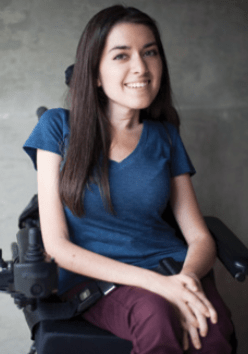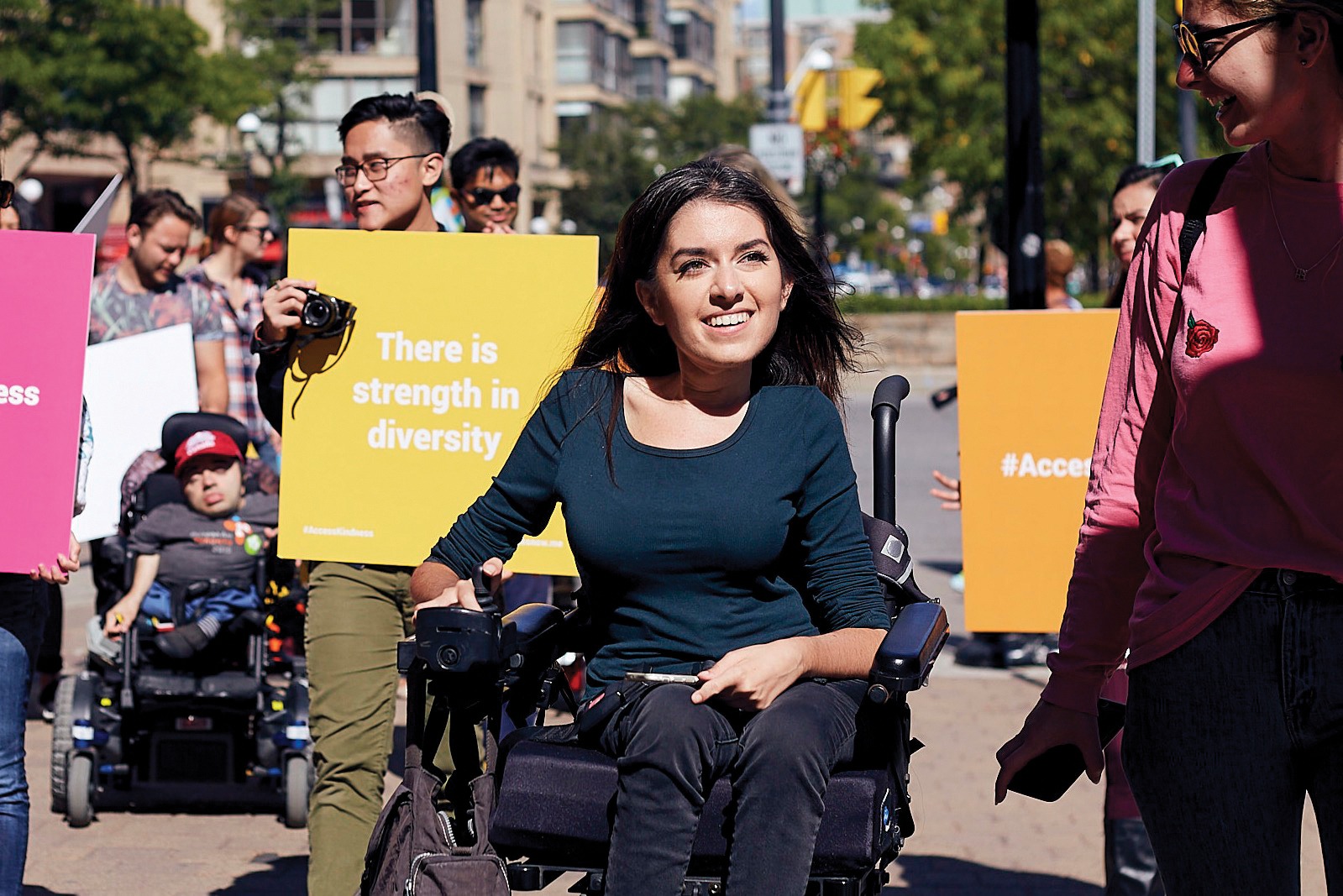Innovating Around Obstacles: Q&A with Maayan Ziv
Living with muscular dystrophy hasn’t stopped Maayan Ziv from becoming a photographer, activist, and innovator. By crowdsourcing information about physical structures, AccessNow, the app Ziv launched in 2015, allows people with mobility challenges to know what they can expect in a given location before they displace themselves. It has proved so popular that Ziv, 28, won Startup Canada’s Resilient Entrepreneur of the Year Award for 2016. Policy Magazine Social Media Editor Gray MacDonald spoke with Maayan Ziv about accessibility, technology, and where the two meet.
Gray MacDonald
Policy Magazine: You’ve said that your own experiences inspired the creation of AccessNow. Was there a particular incident that acted as
a catalyst?
Maayan Ziv: In the fall of 2014 I began my Graduate Studies at Ryerson University. It was the first week of classes, and my classmates and I had planned to go celebrate the beginning of the year. Someone had picked a restaurant off campus and I just could not figure out if the space was going to be wheelchair accessible for me. When we showed up at the restaurant, the place was totally not accessible. I realized right then and there that this challenge of navigating spaces and encountering barriers is one of the biggest problems in my life. I went on to focus my thesis on accessibility, which eventually led to the development of AccessNow.
Policy Magazine: On the flipside, is there a particularly good experience that comes to mind? A particular building or company that you would point to as an example for future architects or designers?

Maayan Ziv: There are some outstanding examples of inclusive design that we really should celebrate more in Canada. When it comes to the built environment, the Canadian Museum for Human Rights in Winnipeg and the new Canada Science and Technology Museum in Ottawa have really shown leadership when it comes to designing an inclusive and well-rounded experience for all to enjoy. From little details about fonts and colour contrast to integrating cutting edge technologies that enable people with disabilities to engage, I think there’s a lot we can learn from buildings like this and the leadership teams behind them.
Policy Magazine: How does this tie into the issue of access in theory vs practice? Is AccessNow trying to close that gap?
Maayan Ziv: When I began building what would become AccessNow I was very conscious of the fact that I did not want to create another awareness campaign. The idea was to find a solution rooted in action, that could actually create positive impact right away. Through this work, mobilizing communities and creating a useful accessibility resource together, the ripples of education and awareness building have followed. Nowadays, much of my work consists of showing people—not telling them—what the power of a like-minded community can accomplish in creating a more accessible world. In doing this, we’re often also engaging with people who have yet to learn about the importance of accessibility and invite them to be part of our movement, a movement driven
by action.
Policy Magazine: AccessNow includes restaurants, cafés, hotels, airports, government buildings, and more. Has this broad approach presented any challenges?
Maayan Ziv: The idea is to share as much information as possible about all kinds of places and experiences around the world. What we are seeing is that many of our users are more motivated to share success stories, positive ratings, of places they’ve visited. We also have a lot more information about lifestyle and entertainment establishments because these are the types of places people like to go to do things. I don’t think that’s necessarily a bad thing, although we certainly have begun to think about how we can collaborate with specific groups that have more insight on other areas as well, like government buildings, libraries and more.
Policy Magazine: Do you feel as though your experience with disability has influenced how you approach innovation and problem solving?

Maayan Ziv: Absolutely. Living with a disability has given me a really unique perspective and as I’ve grown, this is something I’ve really learned to love. I’ve basically been problem solving since I was a very young girl, because the world hasn’t really been built for someone like me, and if I want to engage with my friends or community—or do anything, really—I’m often needing to think outside the box to figure out how I’m going to do things. This element of creativity has built up a pretty strong sense of resilience within me. I know and expect that usually when I go out, I’ll experience a barrier somewhere, but I keep going anyways and I roll with the punches. These are qualities every good entrepreneur should have.
Policy Magazine: Accessibility needs are sometimes framed as demands for special treatment. Do you feel that innovation has or can help to combat this?
Maayan Ziv: It’s really time we get away from thinking as accessibility as an afterthought or something we need to do to check off a box. Accessibility is not just about empowering people with disabilities, but can actually empower everyone. Accessibility and inclusive design help us build better products and better experiences and this can often lead to innovation. I like to encourage people to see accessibility as an exciting asset.
Gray MacDonald is social media editor of Policy Magazine.
